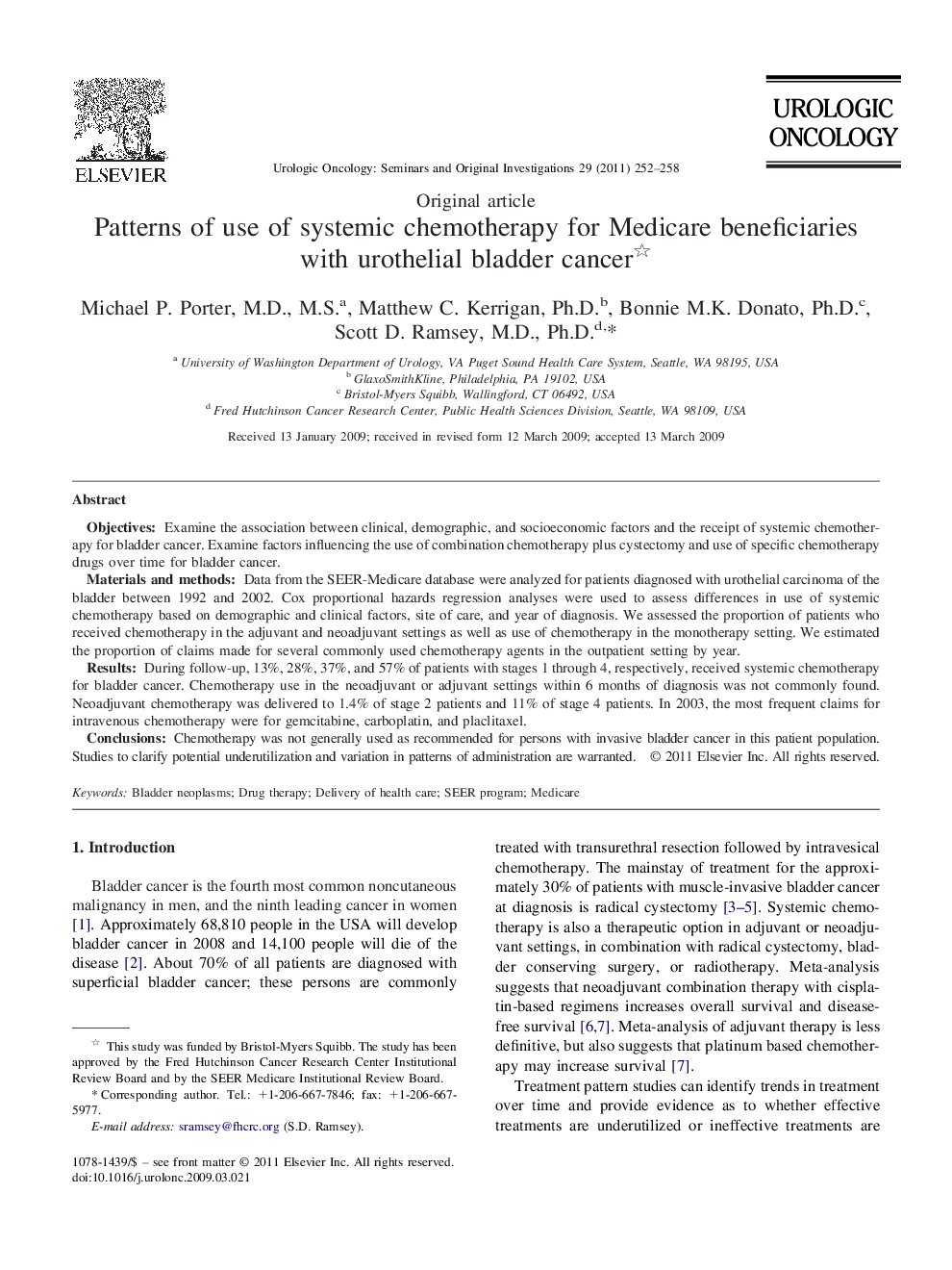| Article ID | Journal | Published Year | Pages | File Type |
|---|---|---|---|---|
| 4000604 | Urologic Oncology: Seminars and Original Investigations | 2011 | 7 Pages |
ObjectivesExamine the association between clinical, demographic, and socioeconomic factors and the receipt of systemic chemotherapy for bladder cancer. Examine factors influencing the use of combination chemotherapy plus cystectomy and use of specific chemotherapy drugs over time for bladder cancer.Materials and methodsData from the SEER-Medicare database were analyzed for patients diagnosed with urothelial carcinoma of the bladder between 1992 and 2002. Cox proportional hazards regression analyses were used to assess differences in use of systemic chemotherapy based on demographic and clinical factors, site of care, and year of diagnosis. We assessed the proportion of patients who received chemotherapy in the adjuvant and neoadjuvant settings as well as use of chemotherapy in the monotherapy setting. We estimated the proportion of claims made for several commonly used chemotherapy agents in the outpatient setting by year.ResultsDuring follow-up, 13%, 28%, 37%, and 57% of patients with stages 1 through 4, respectively, received systemic chemotherapy for bladder cancer. Chemotherapy use in the neoadjuvant or adjuvant settings within 6 months of diagnosis was not commonly found. Neoadjuvant chemotherapy was delivered to 1.4% of stage 2 patients and 11% of stage 4 patients. In 2003, the most frequent claims for intravenous chemotherapy were for gemcitabine, carboplatin, and placlitaxel.ConclusionsChemotherapy was not generally used as recommended for persons with invasive bladder cancer in this patient population. Studies to clarify potential underutilization and variation in patterns of administration are warranted.
